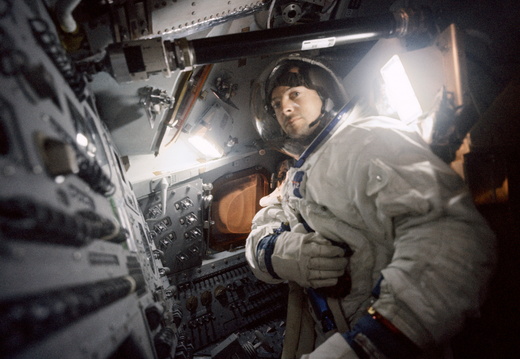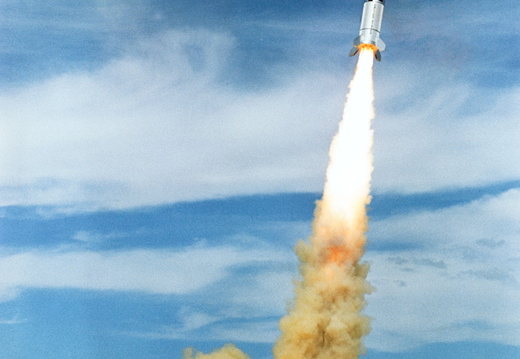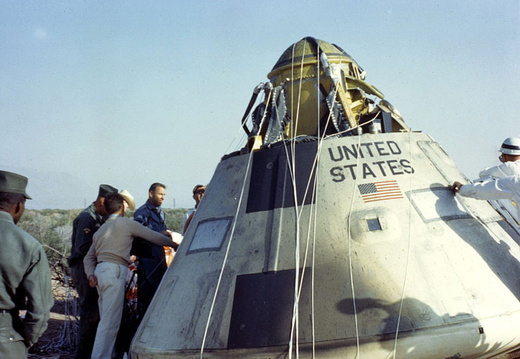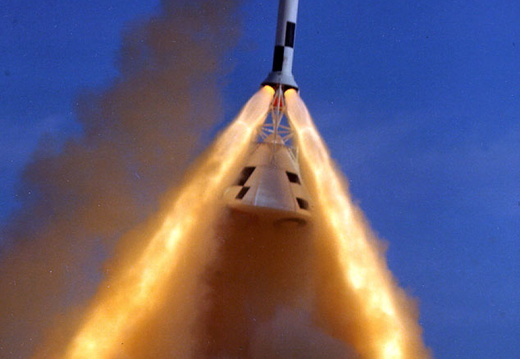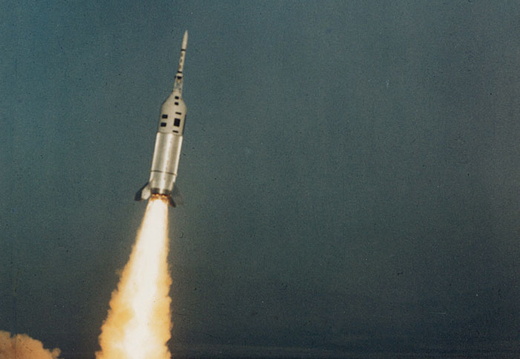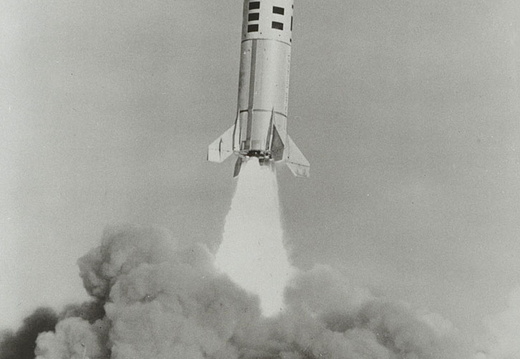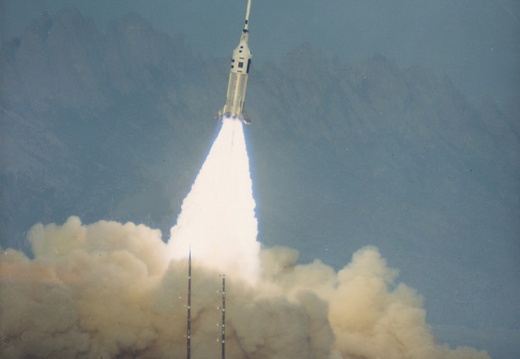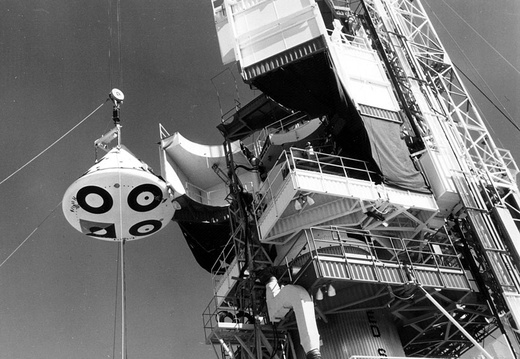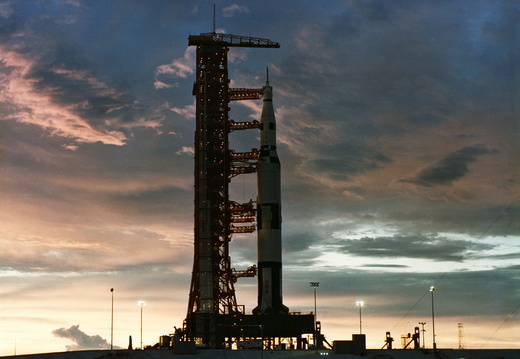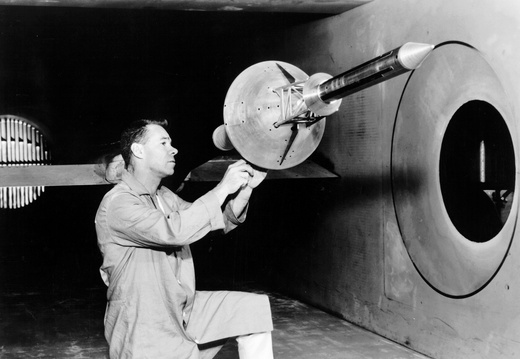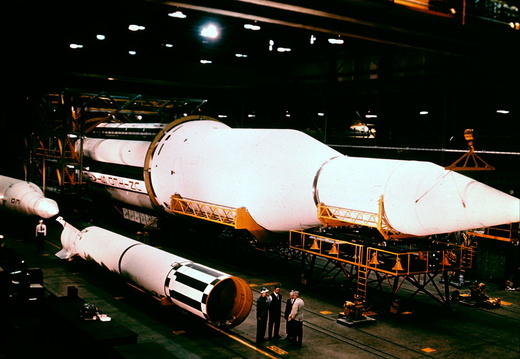
SA-1
SA-1
Result: Successful
Mission Objective
Research and develop the S-I launch vehicle. Test the S-I stage propulsion, and verify the structure and aerodynamics of the vehicle.
Prelaunch Milestones
6/5/61 - Launch Complex 34 dedication
8/15/61 - S-I stage ondock at Kennedy
8/15/61 - S-IV dummy stage ondock at Kennedy
8/15/61 - S-IU ondock at Kennedy
9/6/61 - full tank pressurization test
Launch
Oct. 27, 1961; 10:06 a.m. EST
Launch Pad 34
Saturn I
Payload
Dummy second stage (S-4), weighing 25,000 pounds, ballasted with 90,000 pounds, 11,000 gallons of water
Dummy third stage (S-5), weighing 3,000 pounds, ballasted with 100,000 pounds, 12,000 gallons of water
Orbit
Altitude: 137 km
-> Orbits: suborbital
-> Distance: 344 km downrange
Landing
Oct. 27, 1961
Impact in the Atlantic Ocean
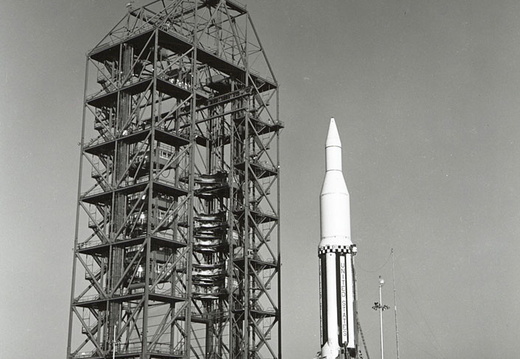
SA-2
SA-2
Result: Successful
Mission Objective
The first payload carried on SA-2 and SA-3 was called Project Highwater, authorized by NASA's Office of Space Sciences. The inert S-IV and S-V stages for these launches carried 109,000 liters, or 30,000 gallons, of ballast water for release in the upper atmosphere. This was used to study the effects on radio transmission and changes in local weather conditions. At an altitude of 150 km, explosive devices ruptured the S-IV and S-V tanks, and in five seconds, ground observers saw the formation of a huge ice cloud estimated to be several kilometers in diameter.
Prelaunch Milestones
2/27/62 - S-I stage ondock at Kennedy
2/27/62 - S-IV dummy stage ondock at Kennedy
2/27/62 - S-IU ondock at Kennedy
4/25/62 - launch vehicle at pad
Launch
April 25, 1962; 9:00:34 a.m. EST
Launch Pad 34
Saturn I
Payload
Water, 95 tons
Dummy second stage
Jupiter nose cone
Orbit
Altitude: 105 km
-> Orbits: suborbital
-> Distance: 80 km downrange
Landing
April 25, 1962
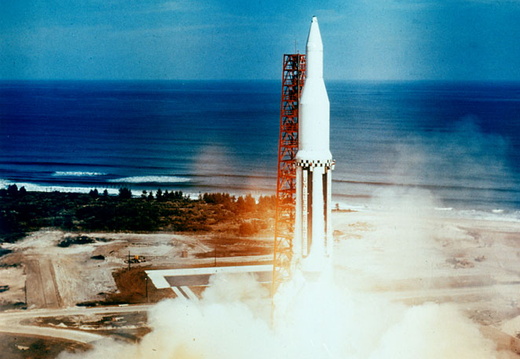
SA-3
SA-3
Result: Successful
Mission Objective
Project Highwater, authorized by NASA's Office of Space Sciences. The inert S-IV and S-V stages for these launches carried 109,000 liters, or 30,000 gallons, of ballast water for release in the upper atmosphere. This was used to study the effects on radio transmission and changes in local weather conditions. At an altitude of 150 km, explosive devices ruptured the S-IV and S-V tanks, and in five seconds, ground observers saw the formation of a huge ice cloud estimated to be several kilometers in diameter.
Prelaunch Milestones
9/19/62 - S-I stage ondock at Kennedy
9/19/62 - S-IV dummy stage ondock at Kennedy
9/19/62 - S-IU ondock at Kennedy
Launch
Nov. 16, 1962; 12:45:02 p.m. EST
Launch Pad 34
Saturn I
Payload
Water, 95 tons
Dummy second stage
Jupiter nose cone
Orbit
Altitude: 167 km
-> Orbits: suborbital
-> Distance: 211 km downrange
Landing
Nov. 16, 1962
Impact in the Atlantic Ocean
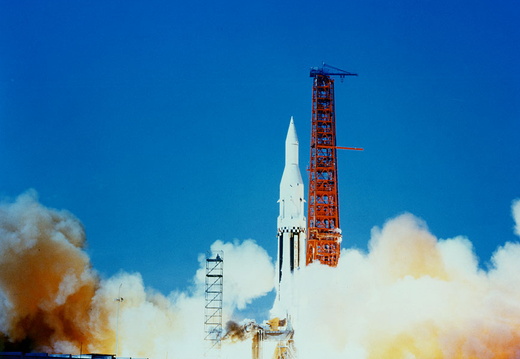
SA-4
SA-4
Result: Successful
Mission Objective
The Saturn I booster S-I stage consisted of a cluster of eight H-1 engines. One of the appealing features of this configuration was the added safety of providing for an "engine-out capability," allowing other engines burn longer than planned if an engine cut off early. On the SA-4 mission, a premature single engine cutoff of one engine was programmed 100 seconds into the flight.
Prelaunch Milestones
2/2/63 - S-I stage ondock at Kennedy
2/2/63 - S-IV stage ondock at Kennedy
2/2/63 - S-IU ondock at Kennedy
Launch
March 28, 1963; 3:11:55 p.m. EST
Launch Pad 34
Saturn I
Payload
Dummy second stage
Jupiter nose cone
Orbit
Altitude: 130 km
-> Orbits: suborbital
-> Distance: 352 km downrange
Landing
March 28, 1963
Impact in the Atlantic Ocean
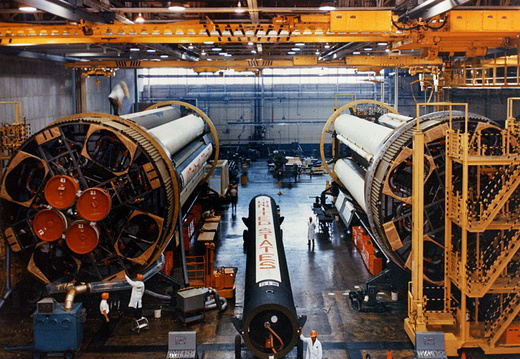
SA-5
SA-5
Result: Successful
Mission Objective
Orbital flight test of S-IV second stage.
Prelaunch Milestones
8/21/63 - S-I stage ondock at Kennedy
9/21/63 - S-IV stage ondock at Kennedy
8/21/63 - S-IU ondock at Kennedy
Launch
Jan. 29, 1964; 11:25:01 a.m. EST
Launch Pad 37B
Saturn I
Launch on Jan. 27, 1964, scrubbed due to a test flange left in the S-I stage liquid-oxygen, or LOX, replenishment line, preventing flow of LOX to vehicle. There was a 73-minute hold on Jan. 29, 1964, due to interference in C-band radar and command destruct frequencies.
Payload
Live second stage
Instrument unit
Ballasted Jupiter nose cone
Orbit
Altitude: 262km apogee, 785km perigee
-> Orbits: orbital Distance: ->
Landing
Jan. 29, 1964
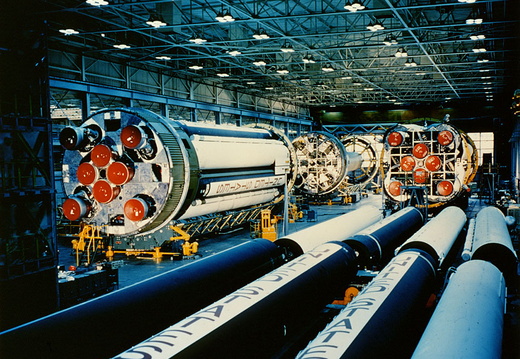
SA-6 - A-101
SA-6
Result: Successful
Mission Objective
Orbital flight test of Saturn/Apollo configuration.
Prelaunch Milestones
2/18/64 - S-I stage ondock at Kennedy
2/22/64 - S-IV stage ondock at Kennedy
2/18/64 - S-IU ondock at Kennedy
Launch
May 28, 1964; 1:07 p.m. EST
Launch Pad 37B
Saturn I
A-101
Spacecraft
BP-13
Payload
Boilerplate 13 CSM
Production LES
Service module/launch vehicle adapter
Orbit
Altitude: 182 km apogee, 227 km perigee
-> Orbits: orbital Distance: ->
Landing
May 28, 1964
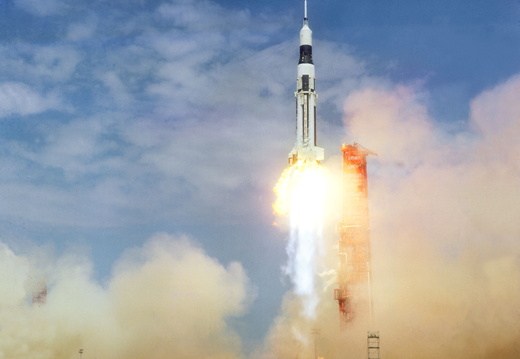
SA-7 - A-102
SA-7
Result: Successful
Mission Objective
Final qualification flight for Saturn I launcher.
Prelaunch Milestones
6/7/64 - S-I stage ondock at Kennedy
6/12/64 - S-IV stage ondock at Kennedy
6/7/64 - S-IU ondock at Kennedy
9/18/64 - launch vehicle at pad
Launch
Sept. 18, 1964; 11:22:43 a.m. EST
Launch Pad 37B
Saturn I
A-102
Spacecraft
BP-15
Orbit
Altitude: 105 km
-> Orbits: suborbital
-> Distance: 80 km downrange
Landing
April 25, 1962
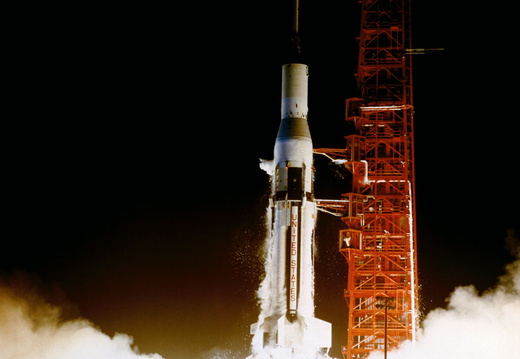
SA-8 - A-104
SA-8
Result: Successful
Mission Objective
BP-26 contained Pegasus meteoroid satellite.
Prelaunch Milestones
2/25/65 - S-I stage ondock at Kennedy
2/28/65 - S-IV stage ondock at Kennedy
3/8/65 - S-IU ondock at Kennedy
5/25/65 - launch vehicle at pad
Launch
Launch Pad 37B
Saturn I
A-104
Spacecraft
BP-26
Orbit
Altitude: 506 km apogee, 745 km perigee
-> Orbits: orbital Distance: ->
Landing
May 25, 1965
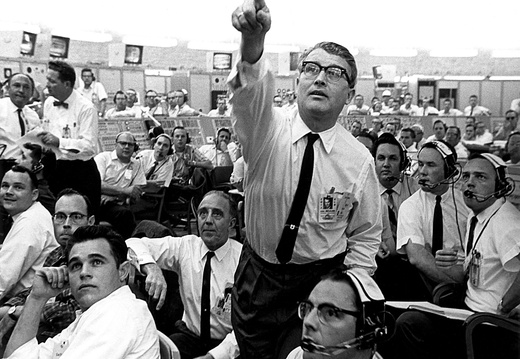
SA-9 - A-103
SA-9
Result: Successful
Mission Objective
BP-16 contained Pegasus meteoroid satellite.
Prelaunch Milestones
10/30/64 - S-I stage ondock at Kennedy
10/22/64 - S-IV stage ondock at Kennedy
10/30/64 - S-IU ondock at Kennedy
2/16/65 - launch vehicle at pad
Launch
Feb. 16, 1965; 9:37:03 a.m. EST
Launch Pad 37B
Saturn I
A-103
Spacecraft
BP-16
Orbit
Altitude: 496 km apogee, 744 km perigee
-> Orbits: orbital Distance: ->
Landing
Feb. 16, 1965
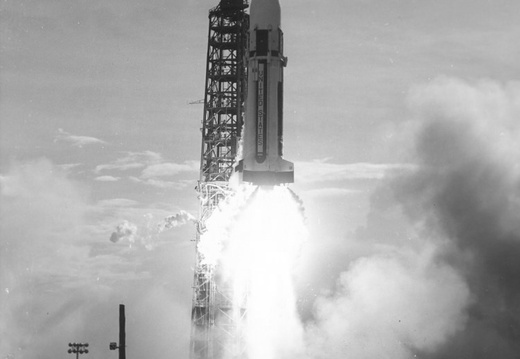
SA-10 / A-105
SA-10
Result: Successful
Mission Objective
BP-9 contained Pegasus meteroid satellite.
Prelaunch Milestones
6/1/65 - S-I stage ondock at Kennedy
5/8/65 - S-IV stage ondock at Kennedy
6/1/65 - S-IU ondock at Kennedy
Launch
July 30, 1965; 9:00 a.m. EST
Launch Pad 37B
Saturn I
A-105
Spacecraft
BP-9
Orbit
Altitude: 528 km apogee, 531 km perigee
-> Orbits: orbital Distance: ->
Landing
July 30, 1965
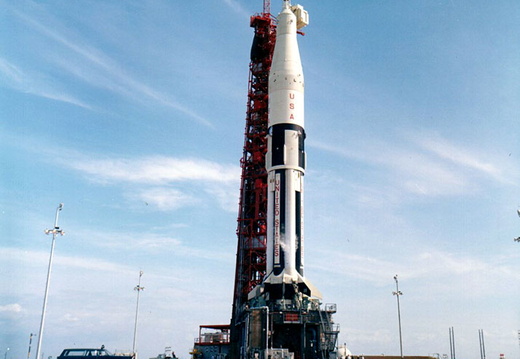
AS-201
AS-201
Mission Objective
Achieved structural integrity and compatibility of launch vehicle, as well as launch loads. Demonstrated separation of first and second stages of Saturn, LES and boost protective cover from the command and service module, or CSM. Demonstrated separation of CSM from instrument unit, spacecraft and lunar module adapter, as well as CM separation from the SM. Verified operations of Saturn propulsion, guidance and control, and electrical subsystems. Partially achieved verification of spacecraft subsystems and heat shield for re-entry from low Earth orbit, due to loss of data during maximum heating. Demonstrated operation of mission support facilities.
Prelaunch Milestones
8/14/65 - S-I stage ondock at Kennedy
8/14/65 - S-IB stage ondock at Kennedy
9/18/65 - S-IVB ondock at Kennedy
10/22/65 - S-IU ondock at Kennedy
10/25/65 - launch vehicle on pad
12/26/65 - spacecraft on pad
2/9/66 - Countdown Demonstration Test
2/20/66 - countdown began
Launch
Feb. 26, 1966; 11:12:01 am EST
Launch Complex 34
Eastern Test Range, Cape Canaveral, Fla.
Saturn IB
Hold for three days due to bad weather conditions and for a break in subcable to downrange station. Hold for 30 minutes on Feb. 26, 1966, to catch up on LOX loading. Hold for 30 minutes to complete liquid-hydrogen loading, which had been delayed by work on a GSE helium regulator problem. Hold for 78 minutes to complete closeout of spacecraft. Hold for 66 minutes because of cutoff caused by failure of helium pressure switch in Saturn IB ready circuit. Hold for 30 minutes, during which flight was canceled and then re-instated, for further information on helium pressure problem.
Spacecraft
CSM-009
Orbit
Altitude: 303 miles (488 km)
-> Orbits: suborbital
Duration: 36 minutes, 59 seconds
Distance: 5,264 miles (8,472 km)
Mission Highlights
Both booster and spacecraft performed adequately. From liftoff to touchdown in the South Atlantic, the mission lasted 37 minutes. The spacecraft was recovered two and a half hours after splashdown. There were several malfunctions, mostly minor, but three were serious. First, after the service propulsion system fired, it operated correctly for only 80 seconds. Then, the pressure fell 30 percent because of helium ingestion into the oxidizer chamber. Second, a fault in the electrical power system caused a loss of steering control, resulting in a rolling re-entry. And, third, flight measurements during re-entry were distorted because of a short circuit.
Landing
Feb. 26, 1966; 11:49 am EST
Splashdown: Atlantic Ocean, 8472 km downrange
Impact Point: 8.18 degrees south, 11.15 degrees west
Recovery Ship: USS Boxer at 2:20 p.m. EST
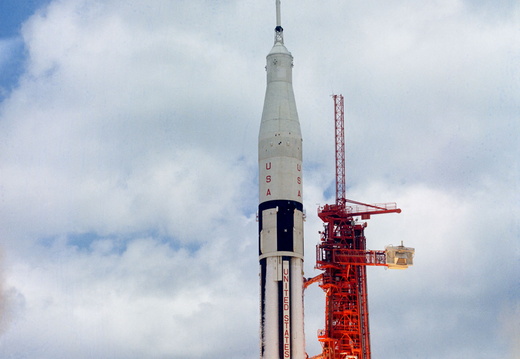
AS-202
AS-202
Mission Objective
The primary mission objectives were to evaluate the Apollo command module heat shield at a high heating load, and to obtain further information on the launch vehicle and spacecraft. The flight tested structural integrity and compatibility, flight loads, stage separation, subsystem operations, and emergency detection system operations. All mission objectives were achieved.
Prelaunch Milestones
2/7/66 - S-I stage ondock at Kennedy
2/7/66 - S-IB stage ondock at Kennedy
1/29/66 - S-IVB ondock at Kennedy
2/21/66 - S-IU ondock at Kennedy
3/11/66 - launch vehicle on pad
7/2/66 - spacecraft on pad
7/2/66 - Countdown Demonstration Test
8/5/66 - countdown began
Launch
Aug. 25, 1966; 1:15:32 p.m. EDT
Launch Complex 34
Eastern Test Range, Cape Canaveral, Fla.
Uprated Saturn I (Saturn-IB)
Hold for 60 minutes to resolve problem with launch vehicle digital computer during power transfer test. A 48-minute hold for recurrence of computer problem. A 41-minute hold to attempt to clear up problem with the remote site data processor on the Rose Knot Victor, and a final hold for five minutes to evaluate Saturn IB low fuel mass quantity indicator.
Spacecraft
CSM-011
Orbit
Altitude: 710 miles (1,143 km)
-> Orbits: suborbital
Duration: 93 minutes
Mission Highlights
Second flight test of major spacecraft systems and second performance check of command module, or CM, heat shield. First use of spacecraft fuel cell power system. Liftoff was normal. Launch vehicle developed 7,116,800 newton, or 1,600,000 pounds, thrust during first (S-IB) stage powered flight. After separation of Apollo spacecraft (011), the service module, or SM, engine burned once to raise the spacecraft to an altitude of 1,136 km, or 706 sm. It then was ignited and cut off three more times to test rapid restart capability. CM separated from SM and re-entered atmosphere at more than 32,026 kph, or 19,900 mph. Maximum re-entry temperature of CM's outer surface was calculated to be about 1482 degrees C, or 2700 degrees F. Interior temperature was 21 degrees C, or 70 degrees F.
Landing
Aug. 25, 1966
Splashdown: Pacific Ocean
Impact Point: 500 miles southwest of Wake Island
Recovery Ship: USS Hornet at 11:17 p.m. EDT
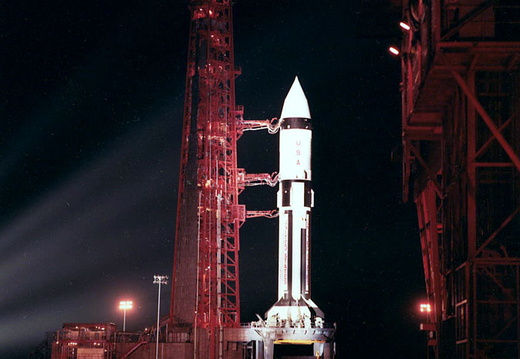
AS-203
AS-203
Mission Objective
Mission objectives included evaluating performance on S-IVB instrument unit stage under orbital conditions, and obtaining flight information on venting and chill-down systems. It also included gathering information on fluid dynamics and heat transfer of propellant tanks, attitude and thermal control systems, launch vehicle guidance, and checkout in orbit. All objectives were achieved.
Prelaunch Milestones
4/6/66 - S-IVB ondock at Kennedy
4/12/66 - S-I stage ondock at Kennedy
4/12/66 - S-IB stage ondock at Kennedy
4/14/66 - S-IU ondock at Kennedy
4/21/66 - launch vehicle at pad
7/1/66 - Countdown Demonstration Test
Launch
July 5, 1966; 10:53:17 a.m. EDT
Launch Complex 37B
Eastern Test Range, Cape Canaveral, Fla.
Saturn IB
Hold for four minutes to examine quality of signal from liquid-hydrogen television cameras. A 98-min hold because of loss of signal from camera No. 2 - decision was made to fly with only one camera. Final one minute hold because of loss of Bermuda radar.
Payload
Nose Cone
LH2 in S-IVB
Orbit
Altitude: 185 km by 189 km
Inclination: 31.98 degrees
Orbits: Four
Landing
No Recovery
